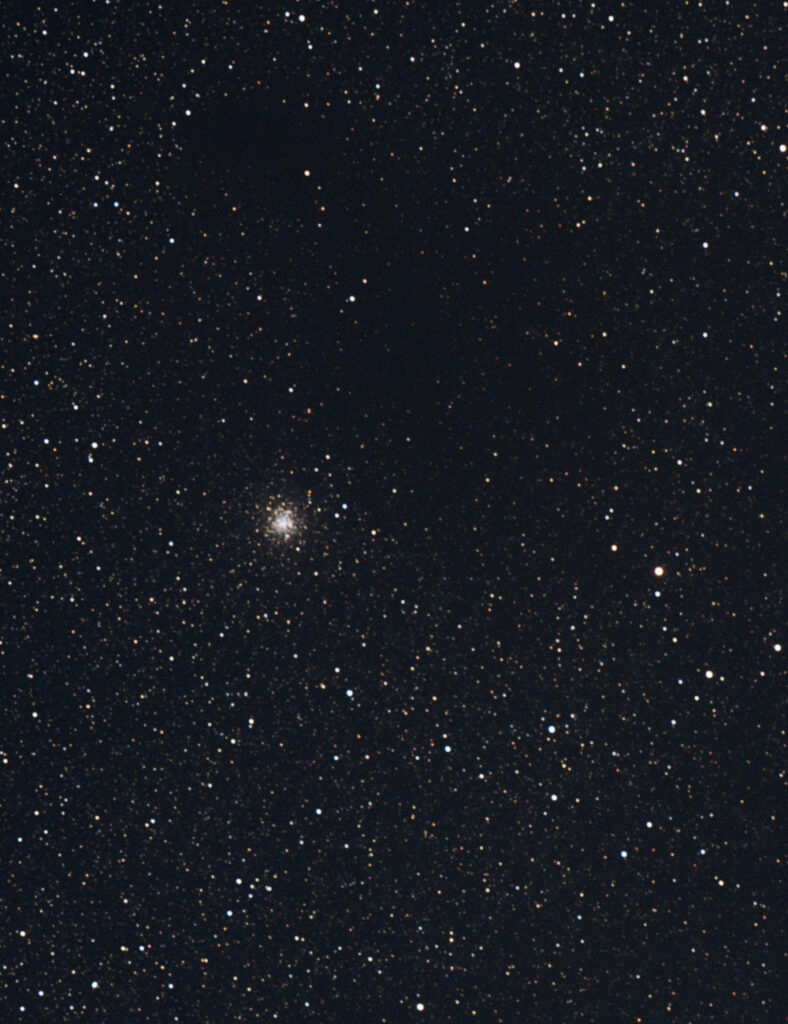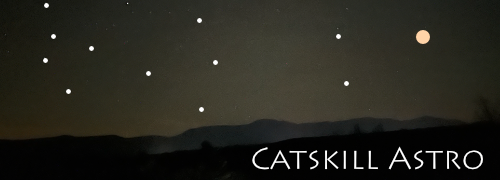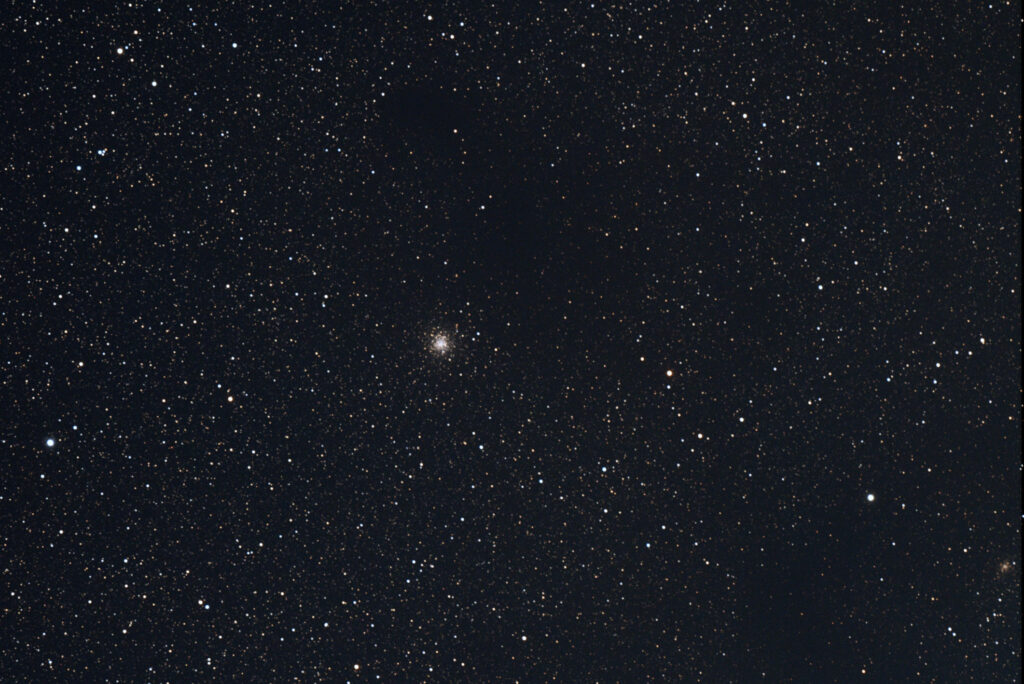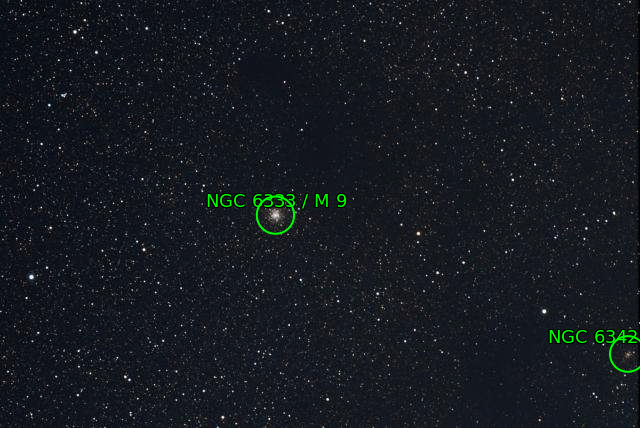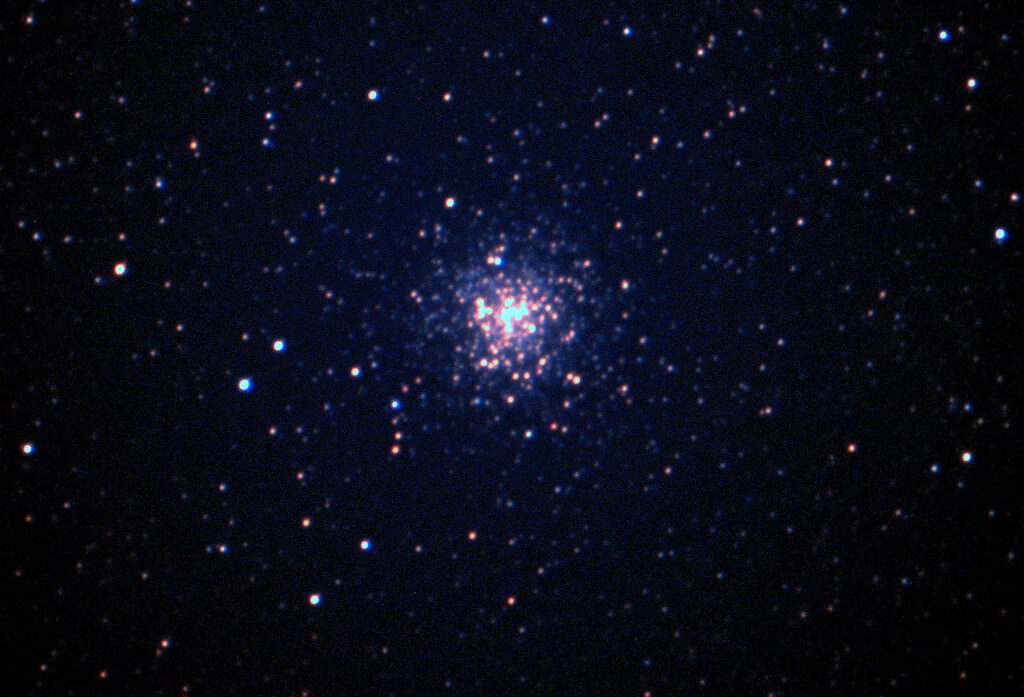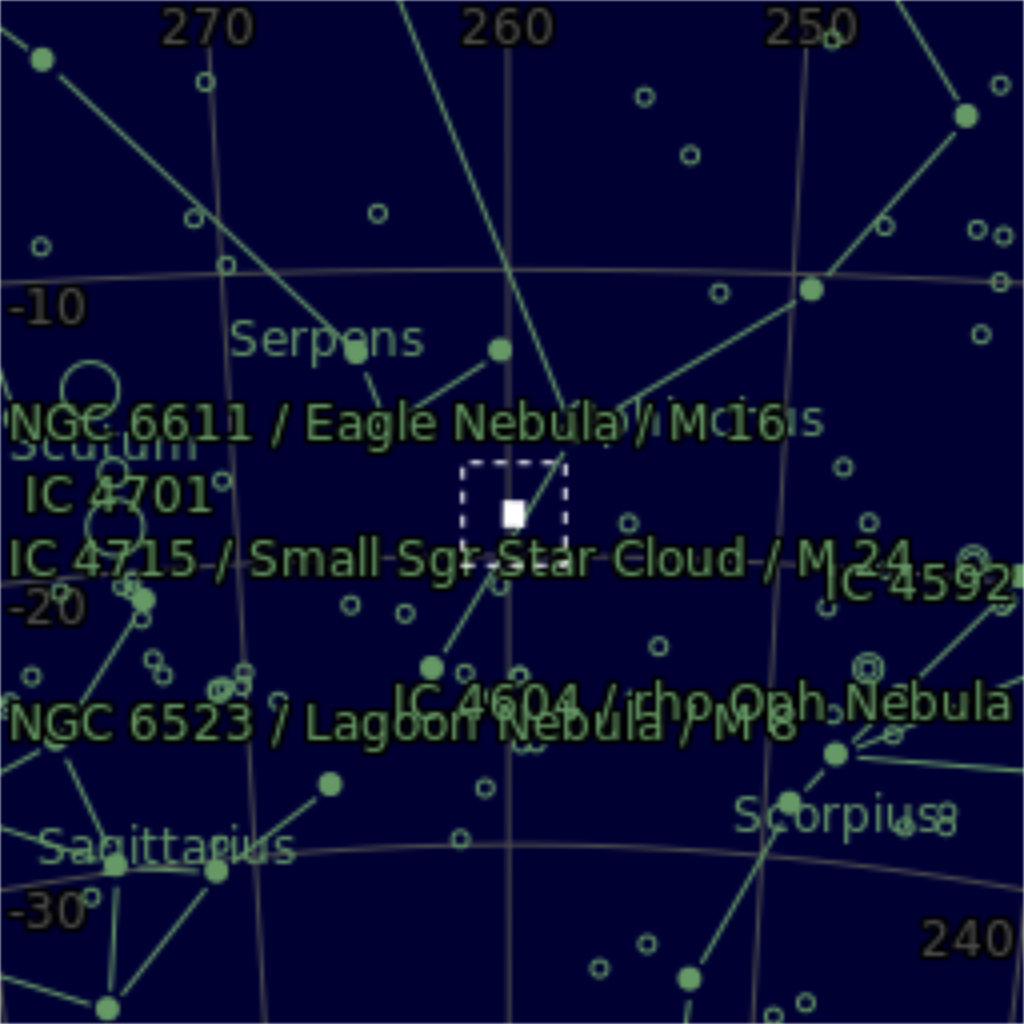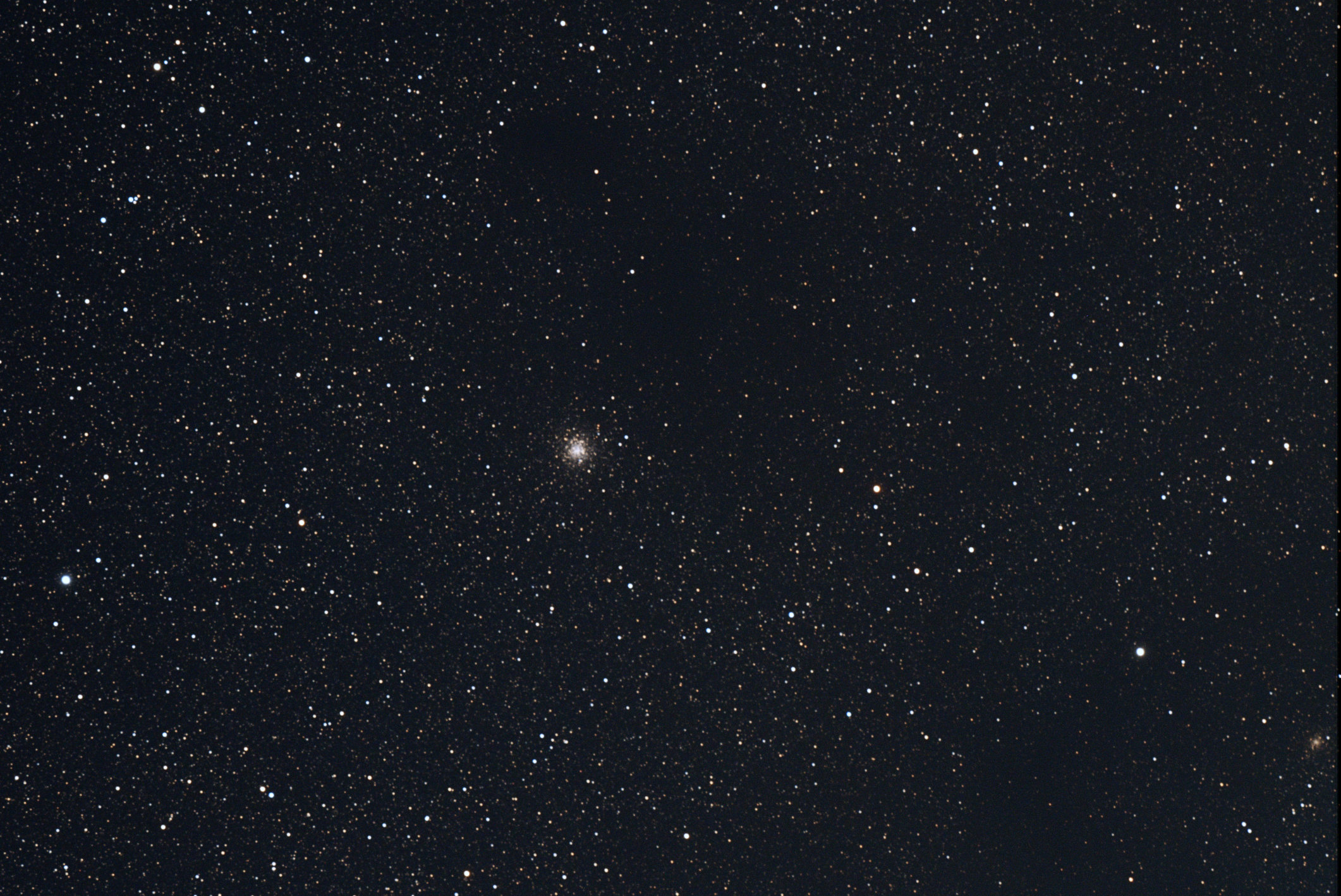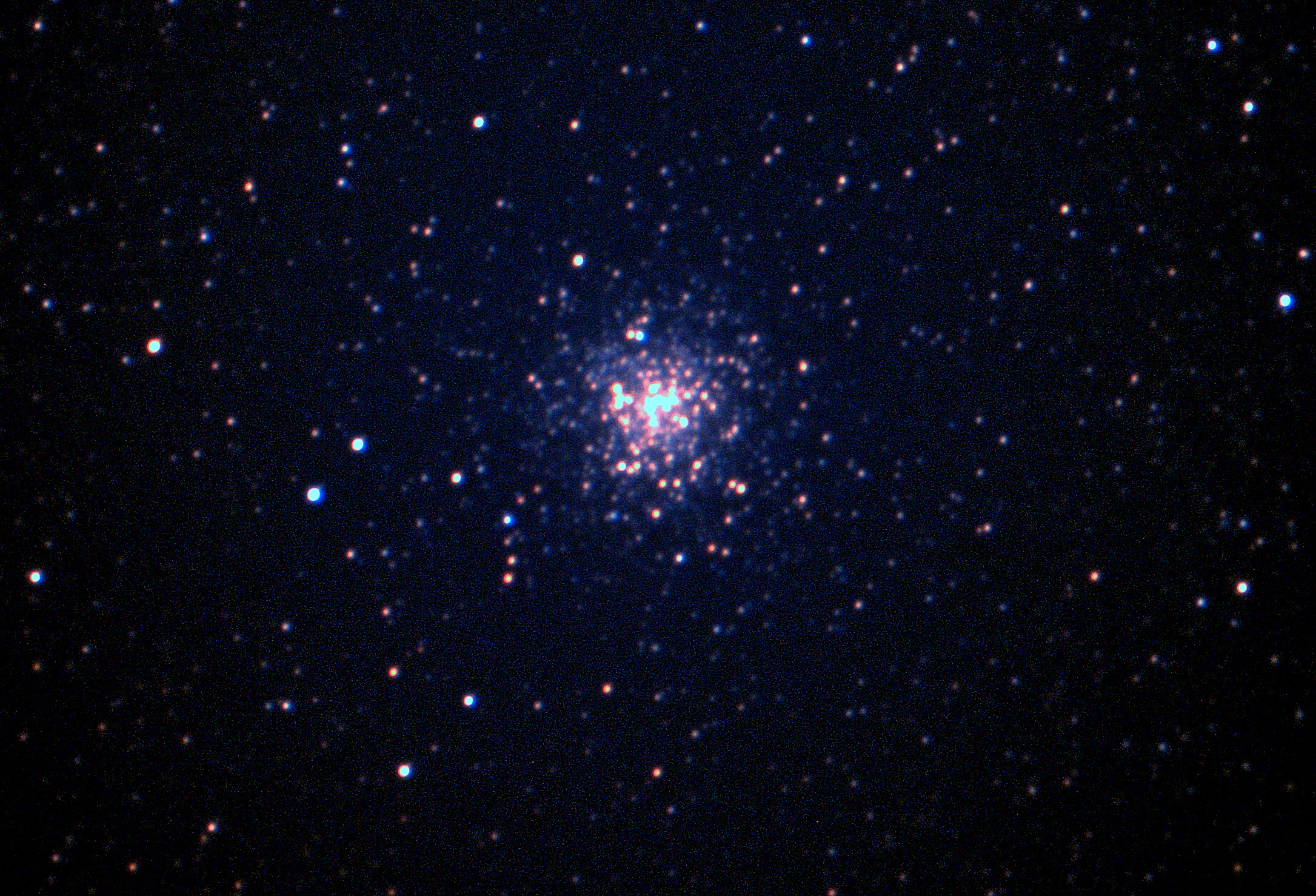| Description | M9 was Messier's personal discovery #2 in the list, after M3, on May 28, 1764 a gap of 5 days: "Nebula, without star, in the right leg of Ophiuchus; it is round & its light is faint". It wasn't until William Herschel paid it a visit in 1783 that individual stars were resolved. <--> M9 is a "middling" globular cluster, ranking 21st out of 29 GC's in the catalog in terms of Apparent Magnitude (7.72), and 13th in terms of apparent size at 12'. These rankings are based on a table I found in Wikipedia listing all known Globular Clusters. It is in some cases inconsistent with the individual Wikipedia articles on each GC but is (hopefully) internally consistent. My featured images, taken in March 2025, show M9 in its context of a dense star-field with a looming dark nebula, and a second, tiny GC (NGC 6342) nearby. The early-morning observing conditions were quite good. My second observation is from May of 2024 and shows a close-up of the cluster itself, captured with my EdgeHD on a full moon night. It required some fairly aggressive color correction, but indicates at least some of the blue and red-giant stars in the center. |
